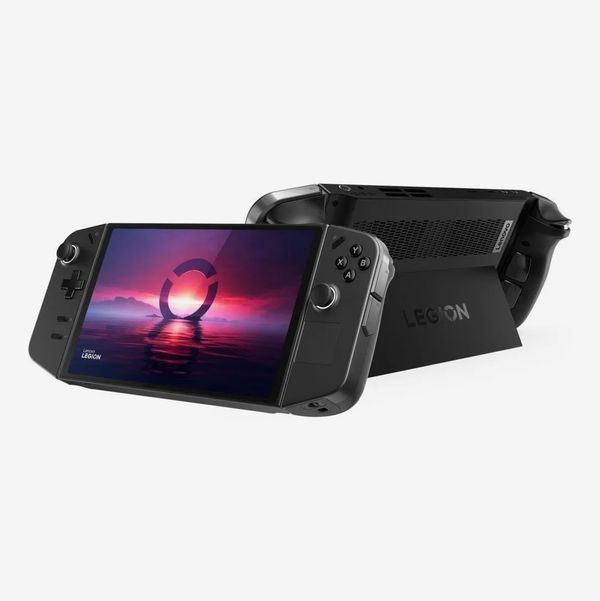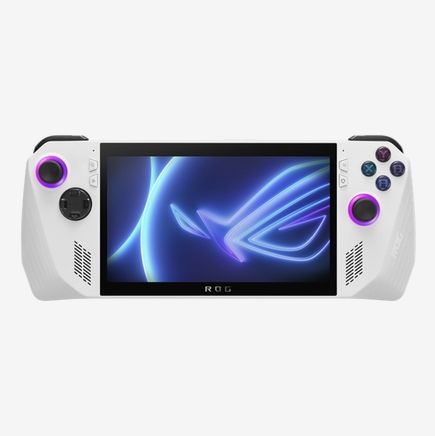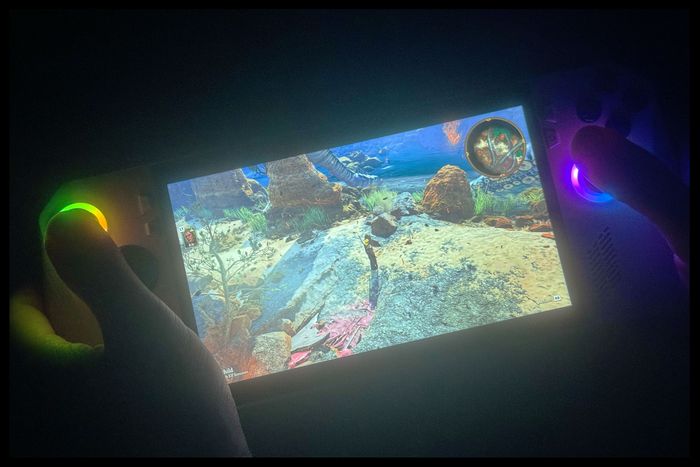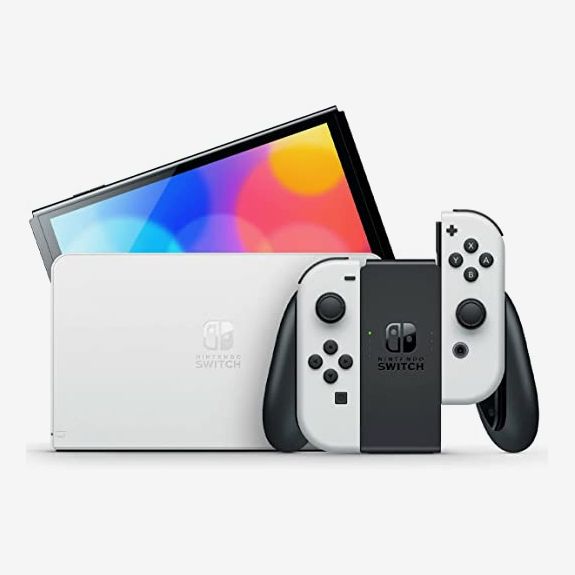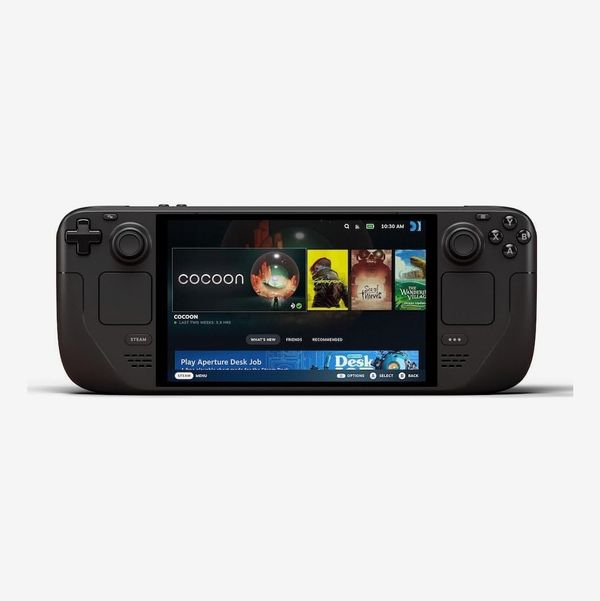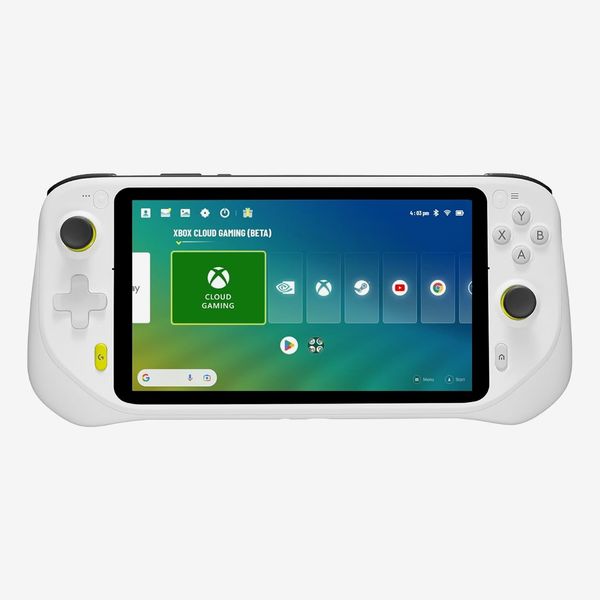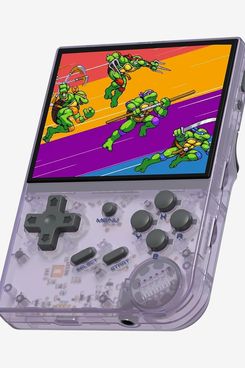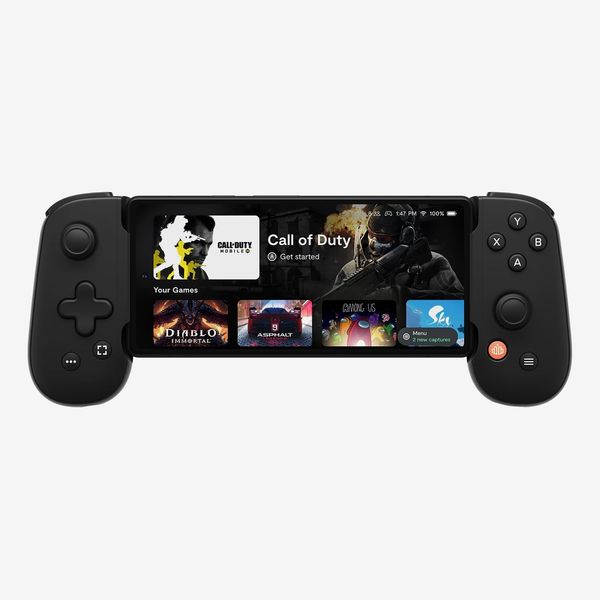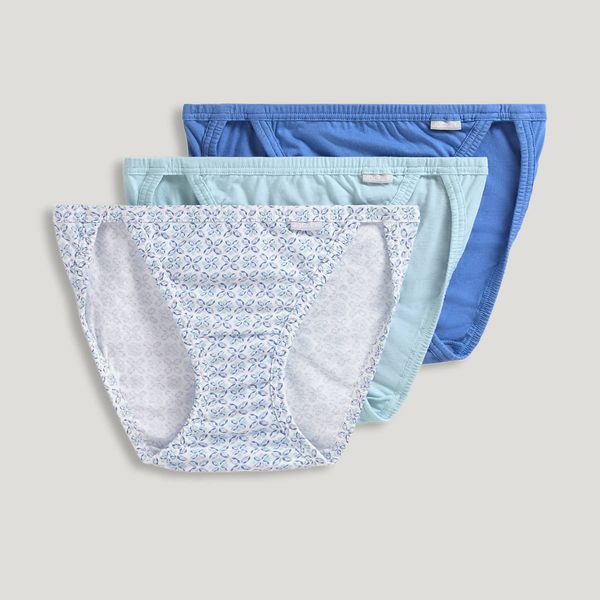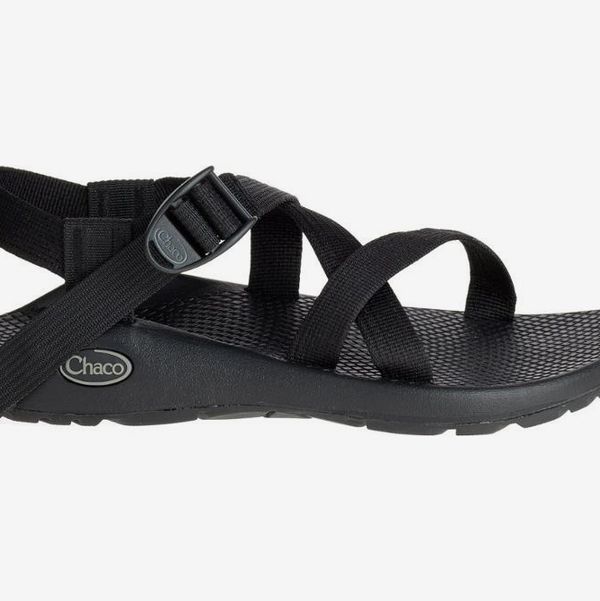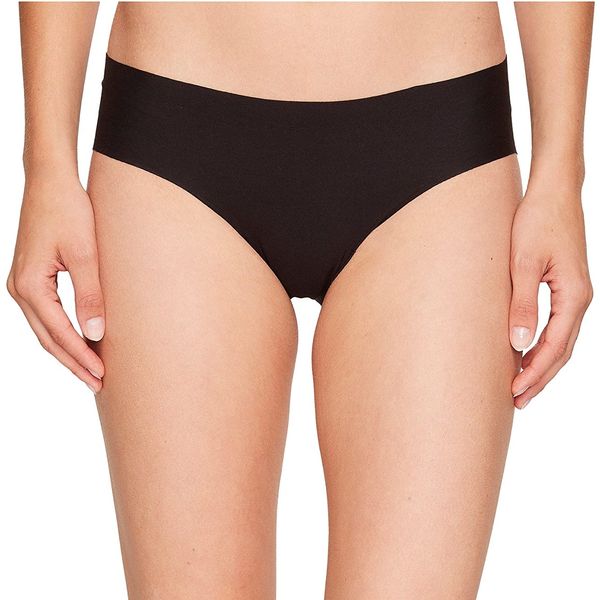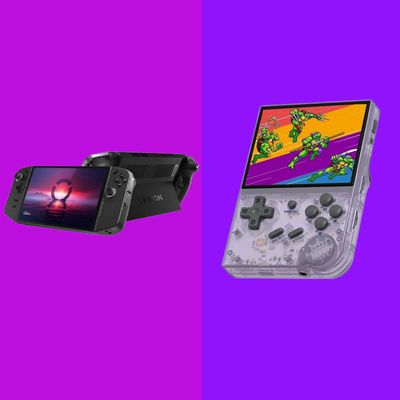
In this article
The latest handheld gaming consoles can play full-blown console and PC games like Skyrim or Fortnite, keep a whole library of retro classics like Pokemon Red and Blue and Battletoads always handy, and in some cases even pull double duty as a tablet. While the Nintendo Switch doesn’t do any of those things, it is the undisputable giant in this space due to its portability and long battery life, the steady flow of new Switch-only games like The Legend of Zelda: Tears of the Kingdom, a large library of third-party games, and detachable controllers that allow it to transform from a handheld to a home console with the simple addition of a dock. It’s also been around since 2017.
Since that year, however, Nintendo hasn’t done much to upgrade it, aside from adding an OLED screen in 2021. Its processor isn’t as powerful as what you can find in other handheld consoles, or even your smartphone, but Nintendo does a good job designing games that work well with it. It’s the third-best-selling gaming console — and not just handheld ― of all time. As for those other handheld consoles, all of them together make up just a tiny share of the market in comparison to the Switch.
So that’s all just to explain why we don’t have a best overall pick here. If you’re looking for a well-designed, fun handheld gaming console that’s ready to play right out of the box and you don’t already own a Switch, then you should probably get a Switch (and you can read on for the better of the two options available). If you’re looking for the latest in handheld game consoles, I tested seven to find the best ones.
What we’re looking for
Platform
Consoles running Windows can play games from the Steam Store or Epic Games Store, as well as direct downloads for games from indie publishers and cloud services. Android consoles can play anything available on the Google Play Store, as well as cloud-gaming services through a browser. The Nintendo Switch and Steam Deck both run proprietary systems, and you can only install games from the company’s respective stores (without fiddling with the software).
Weight
The heavier a handheld console is, the less time you’ll be able to play it before it starts to strain your hands (but if you mostly plan to use it while in the dock at home, this may not be an issue). Devices with larger screens and more processing power tend to be heavier. Lighter devices are obviously more convenient for travel.
Screen size and resolution
Most handheld consoles have at least seven-inch screens, and their resolutions range from 1280 x 800 up to 1920 x 1080. Games look good even on lower-resolution screens, so it’s not a dealbreaker, but if you’re going to play games with a lot of details and in-game text, a higher resolution will produce a clearer image.
Screen type
The two main types of displays that these consoles use are LED and OLED. The biggest difference is that LED displays have one backlight behind the pixels, so the entire screen illuminates. OLED screens have a light behind each pixel, so for areas of the screen that are black, the pixels aren’t lit up at all, which gives you blacker blacks that make just about any game look better. Overall, though, LED screens have better color reproduction and visibility in bright rooms, plus they’re less susceptible to screen burn-in.
Storage
The Switch is the only console on this list that uses physical cartridges in addition to running downloaded games. The rest all run games you download to the console’s internal drive or stream through the cloud. For handhelds with expandable storage via microSD, 256 GB should be the bare minimum, as games like Baldur’s Gate 3 require over 100 GB. Even if you’re not installing huge games like that, you may still accumulate a large library over time.
Battery life
The Switch lasts longer than most handheld consoles with a battery life of up to ten hours, but you can expect roughly two to four hours out of any handheld running Windows, and close to nine hours on Android consoles made for cloud gaming. This will vary depending on what type of game you’re playing, so assume that the more graphics-heavy a game is, the shorter the battery life will be.
Ports
The more USB-C ports a console has, the more peripherals (like external monitors, keyboards, and controllers) you can use (even while charging the device). Having extra ports may not be as important if you’re mostly using it on the go, but if you plan on gaming from your couch or desk, the added inputs will come in handy.
Best handheld PC gaming console
Platform: Windows | Weight: 1.41 pounds | Screen size and resolution: 8.8-inches; 2560 x 1600 | Screen type: LED | Storage: 512 GB | Battery life: 2-4 hours | Ports: USB-C (2)
If you’re willing to forgo Nintendo-exclusive titles, I think most people are better off getting the Lenovo Legion Go. It quickly earned its place as my favorite handheld console earlier this year thanks to its great features and uniquely versatile design. Compared to the other handhelds I’ve tested, it can connect to more peripherals, it’s the only console that’s not a Switch to feature removable controllers, and you can use it as a Windows tablet.
Lenovo included a bunch of features in the Legion Go that make it more enjoyable for game playing than competitors like the ASUS Rog Ally or Steam Deck. Its 8.8-inch screen is the largest of any handheld console, and the screen looks great with a higher resolution than any other model on this list. There’s an adjustable stand on the back that you can use to prop the Legion Go’s screen up at nearly any angle. The controllers, which are on either side of the screen, can be removed and used in the same way as the Nintendo Switch’s Joy-Cons. With the two USB-C ports, you can plug in third-party accessories such as external GPUs or a monitor while charging the console.
The Legion Go’s screen shines with games like Baldur’s Gate 3. Movement looks smooth, details are bright, and items are easy to spot even when zoomed out. I wouldn’t recommend playing this game on low graphics settings, though, as things get too choppy to be enjoyable. Even less graphics-heavy games like Dave the Diver and Stardew Valley benefit from the Legion’s crisp display, and colors pop, but not quite as much as on the Steam Deck OLED. Despite having a larger screen than consoles like the ROG Ally and Steam Deck, Lenovo’s handheld doesn’t feel significantly bigger, though the added weight is just enough to be noticeable and result in slightly shorter play sessions.
The controls on the Lenovo are more comfortable to hold than the Steam Deck’s or ROG Ally’s, even when removed from the device, and work great with the Legion Go when using its stand, which can prop the device up at nearly any angle. I’ve used it to play a bit of Slay the Spire at a coffee shop, and on an airplane tray over the holidays. No other handheld console is as flexible with how you interact with it. To do the same thing with the Steam Deck or ROG Ally, you’d need third-party accessories like a stand and wireless controller, and the Switch’s flimsy plastic stand only works at one angle.
Because its controls are detachable, the Legion Go works as a Windows tablet when the controls are removed. You can even pair a Bluetooth mouse and keyboard with it.
As with the other handhelds that can play PC games, battery life can be quite short. The Legion Go can only run on battery power for about four hours maximum, and that’s with very conservative graphics settings. Playing games like Baldur’s Gate or Call of Duty will eat through the battery much faster — in just about two hours — but it’s enough to get through a short flight.
Best (less-expensive) handheld PC gaming console
Platform: Windows | Weight: 1.34 pounds | Screen size and resolution: 7-inches; 1920 x 1080 | Screen type: LED | Storage: 256 GB; microSD card slot (1) | Battery life: 1-4 hours | Ports: USB-C (1)
The ASUS ROG Ally — the only other handheld on this list to come installed with Windows — is like a smaller Legion Go with a more gamer-focused design but fewer bells and whistles. It has a smaller, lower-resolution display than the Legion, and it’s a tad bit lighter. You can’t detach the controls, and it lacks a stand, but playing games works the same. Among all the consoles I tested, this one also has the best on-device sound: Audio sounds clear even at full volume, and dialogue is easier to hear than on any other device.
The ROG Ally is just as comfortable to hold as the Legion Go. Its buttons are responsive, and the joysticks move smoothly, but there isn’t a trackpad on either side, which both the Steam Deck and Legion Go have for more precise movement and cursor control. While I wish the Ally had removable controllers, I appreciate that Asus made its handheld light enough to not be strenuous on the arms. In fact, when I traveled with the Legion Go over the holidays, I missed the lighter Ally.
The Ally’s display looks bright, crisp, and responsive even in action-focused games. Its LED display doesn’t produce the same vibrant colors as the Steam Deck’s OLED display, but games still look good on it.
Performance on the Ally is similar to the Legion Go, as it’s powered by the same chip. That said, battery life is slightly worse. When playing less demanding games like Dave the Diver, I could squeeze just about four hours of gameplay out of the ROG Ally, but that dipped down to just over an hour while playing Baldur’s Gate 3. You can manage this by using lower performance settings, which are easily accessible via an on-device button.
Although technically the Ally, like the Legion Go, supports external GPUs for better graphics, it only works with one ASUS makes. It’s more expensive than other third-party options, and the Legion Go doesn’t have this limitation. And even if you do plug in an external GPU, you’d have to use the only USB-C port on the Ally, so you can’t charge it simultaneously. It’s also worth noting that there have been several issues with the ROG Ally damaging microSD cards, so it’s best to only use the on-device storage with this one. ASUS has announced a new console that will hopefully address this issue, and we’ll be updating this guide after I’ve tested that model.
Best handheld Nintendo gaming console
Platform: Not listed | Weight: 0.71 pounds | Screen size and resolution: 7-inches; 1280 x 720 | Screen type: OLED | Storage: 64 GB | Battery life: 4.5-9 hours | Ports: USB-C (1)
I’ve been playing games on my Switch since 2017, and have used it everywhere from the seats of San Francisco’s BART trains to an uncomfortable airplane seat to my couch. Since it weighs under a pound, I hardly notice it in my bag, and I can lift it out one-handed. While I do wish it had access to more AAA titles like Baldur’s Gate, the Switch is still my main travel companion, as I don’t have to keep a close eye on the battery like I do with the Legion Go or Ally.
Aside from an upgrade to an OLED screen in 2021, Nintendo hasn’t significantly updated its flagship console since its debut in 2017. That’s mainly a testament to the strength of its design. The screen — especially on the newer OLED model — still looks good, even if it’s not as sophisticated as some of the others on this list, and that’s because the games available on the Switch are designed to work well on it.
The Switch is the only way to play Nintendo-exclusive games, including The Legend of Zelda: Tears of the Kingdom, and old games from consoles like the SNES if you’re subscribed to Nintendo Switch Online (you can do this on other consoles via emulators, but the Switch is the only official way to play old Nintendo classics). You won’t find games like Elden Ring, but indie titles like Celeste and Hades are available and run just as well as on any other platform. There are over 10,000 titles in the Nintendo Store, so though it’s not as vast a library as Steam’s, there are plenty of excellent games to try out.
The Joy-Cons are light and easy to hold, and they can be snapped into a controller mold that allows them to be held in a more traditional grip. I prefer using Nintendo’s Switch Pro controller when my Switch is in its dock, but the Joy-Con controller mold works just fine.
The Switch is one of only two devices on this list to feature a stand, but unlike the Legion Go’s stand, the Switch’s is plastic and only works at one angle. It’s not nearly as stable as the Lenovo’s, and its angle isn’t the most convenient to look at. It’s better than not having one at all, but the stand on my personal Switch from 2017 is quite flimsy despite limited use.
Best OLED handheld gaming console
Platform: Custom Linux | Weight: 1.47 pounds | Screen size and resolution: 7-inches; 1280 x 800 | Screen type: OLED | Storage: 512 GB | Battery life: 2-5 hours | Ports: USB-C (1)
Valve’s Steam Deck is not quite as versatile as the Legion Go, but it’s the closest a handheld console that plays PC games gets to feeling as polished as the Nintendo Switch thanks to its custom interface and direct integration into the Steam store. Both the Legion Go and ROG Ally, on the other hand, are complicated by running Windows.
The Steam Deck’s operating system is designed to boot straight into your games library, much like a traditional console. You can also easily navigate to the store and buy new games. Conveniently, Steam will tell you if the game is Deck compatible or not. The interface is the most elegant and easy to navigate of any console I’ve tested, and if you’re familiar with the company’s desktop software, you’ll be a whiz at getting around the Deck in no time. Even if you’re not, it won’t take long.
Just like with the Lenovo and ASUS, there are a ton of settings to tinker with and fine-tune your device’s performance; the Deck just has a cleaner interface and more convenient features. For instance, you can set a frame-rate cap on a per-game basis rather than having to fiddle with your settings every time you launch a different game. Games performed well on the Deck, including The Elder Scrolls: Skyrim and Baldur’s Gate 3, but the battery usually lasted just shy of two hours. It lasted longer while playing games such as Stardew Valley and Terraria, and I could get just about five hours of gameplay with similarly resource-light games. That’s better than on the Ally or Legion Go.
Controls on the Deck are comfortable to hold, and the buttons are neither too mushy nor too clicky; in fact, they feel identical to the buttons on the Legion Go. Each side of the device has a joystick and a trackpad, a four-button array (directional pad on the left, letter buttons on the right), and two shortcut buttons on each side. The Steam Deck’s OLED screen is more pleasant to look at than the LED displays of the Legion Go or ROG Ally thanks to its brighter colors, but its lower resolution produces fewer details.
It’s mostly a strength, but the Deck’s direct integration with the Steam platform can be limiting as well. Without diving into advanced settings and installing things through funky methods, you can’t run games from outside the Steam Store on the Deck, leaving out things like emulators or games like Fortnite that aren’t on Steam.
Best handheld gaming console for cloud gaming
Platform: Android | Weight: 1.02 pounds | Screen size and resolution: 7-inches; 1920 x 1080 | Screen type: OLED | Storage: 64 GB | Battery life: 10 hours | Ports: USB-C (1)
Cloud gaming has come a long way, and with a decent internet connection, you can stream AAA games like Fallout 4 from a browser. Logitech’s G Cloud doesn’t have the power of the ROG Ally or Steam Deck, but because all the games are running on a server, it doesn’t need it. Instead, the G Cloud runs a custom version of Android that lets you sign into cloud-gaming services like Xbox Game Pass or Nvidia Cloud Gaming. That means you’ll need to be online in order for this device to play games usually restricted to more powerful consoles. But because it runs Android, you can also install games from the Google Play Store for offline play, like Stardew Valley and Hades (via a Netflix subscription), and you can pop in an SD card to store more media than the onboard 64GB can hold.
You won’t be able to see as many details on the G Cloud’s 1080p screen as you would on the Legion Go, but this console’s resolution is higher than that of the rest of the consoles I’ve tested, and even playing games over the web, it looked great as long as my connection remained stable.
My favorite thing about using cloud-gaming services is that, unlike when playing games from a store like Steam, you don’t have to wait for things to download. That, of course, means you’ll need an internet connection whenever you want to play, but it’s nice being able to launch a game for the first time without having to wait two hours for a 60 GB file to download over Wi-Fi.
Battery life on the G Cloud lasts hours longer than that of any other non-Switch console I tested, maxing out at about ten hours.
Removable controllers aren’t necessary for a portable console, but the G Cloud is one I do wish had them. Since it runs Android, it could be used as an Android tablet, and you can install apps like Netflix or the Kindle app, but because the controls are fixed in place, the G Cloud is hard to hold when doing anything other than gaming.
If you’re looking for a large-screen device that’ll let you stream games from the cloud, no device does that in a more straightforward way than the G Cloud. You can access the same cloud services from the Legion Go or ROG Ally, but they’re more expensive and their batteries won’t last as long performing the same activities. The G Cloud will also work with any emulators that are on the Google Play Store, and since it’s lighter than the Steam Deck, Legion, and Ally, it’ll serve as a better emulation machine than any of them.
Best handheld gaming console for retro gaming
Platform: Custom Linux | Weight: 0.65 pounds | Screen size and resolution: 3.5-inches; 640 x 480 | Screen type: OLED | Storage: 64 GB | Battery life: 10 hours | Ports: USB-C (1)
You can play games from old-school consoles on several other consoles we recommend, but none of them bring the nostalgic feel of the classic handhelds like the Game Boy, and they can’t fit in your pocket. The Anbernic RG35XX, on the other hand, is designed to look like the original Game Boy, with a higher-resolution display and support for games from consoles like the SNES and Dreamcast.
Everything on the Anbernic gets stored on an SD card (you choose the size of the included one when you check out, but you can swap for a larger card at any time), and it comes preloaded with a ton of games like Pokemon Ruby and Battletoads. They’re all organized by console, including all the Game Boys up to Advance, and even PS1. I felt like a kid rifling through a box of old games as I flipped through the folders of games in the Anbernic, unearthing both classics I’ve missed over the years and those I never got a chance to play. You can download and install your own games as well.
It’s impressive how many games this tiny console can play, but I do wish its casing felt less plasticky. It doesn’t feel cheap (though the device is surprisingly affordable by gaming standards), but a slightly nicer plastic would’ve made it feel more like an actual Game Boy.
Best mobile-gaming console
Platform: iOS, Android | Weight: 0.3 pounds | Screen size and resolution: N/A | Screen type: N/A | Storage: N/A | Battery life: N/A | Ports: N/A
Dedicated consoles are the best way to play games, but if you need something lightweight and don’t want to add another device to your bag, the Backbone One can turn any iPhone or Android phone into a Switch-like gaming device. The controller slides out so you can dock your phone into it (there are USB-C and Lightning versions of the Backbone), and it stays securely in place until you remove it. This controller doesn’t have any batteries — all the controls are powered by the phone — and there’s no pairing necessary, just dock and play.
Like with the G Cloud, using your phone will allow you to access any games on the App Store or Google Play Store, all while taking up less space. If you’re using an iOS phone, though, cloud gaming is a bit trickier as you can’t install an app for any of the cloud-gaming services directly onto your device. Instead, you’ll have to access and play the games through Safari. It works, but it’s not as nice of an experience.
Mobile gaming won’t give you access to the same level of games as a true console, but there are plenty of games on iOS and Android that are just as good as some games you can find on Steam, Xbox, or Playstation. (The iOSgaming subreddit has some particularly thorough roundups if you need some guidance). You can also install an emulator on either platform to play the same games as on the Anbernic, though you’ll have to find downloads of the games yourself.
The Strategist is designed to surface useful, expert recommendations for things to buy across the vast e-commerce landscape. Every product is independently selected by our team of editors, whom you can read about here. We update links when possible, but note that deals can expire and all prices are subject to change.

